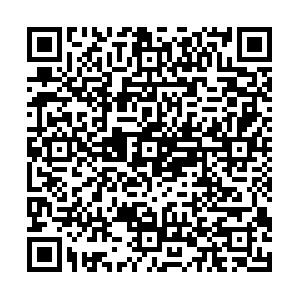Longitudinal association between only-child status and smartphone addiction in middle school students
-
摘要:
目的 探讨是否独生子女与中学生智能手机成瘾的纵向关联,为建立中学生智能手机成瘾的家庭干预措施提供依据。 方法 于2022年10月和2023年10月在深圳某区对30所学校的8 759名初、高中学生分别进行预调查和随访,采用自编问卷了解中学生是否独生子女,使用智能手机依赖量表中文版(C-SAS-SV)评估中学生智能手机成瘾状况。采用多层混合效应模型和亚组分析了解中学生是否独生子女和智能手机成瘾的关联。 结果 2022—2023年,中学生手机成瘾报告率从24.1%上升至25.2%,非独生子女相较独生子女智能手机成瘾风险更高(多因素调整模型:OR=1.2,95%CI=1.1~1.4),其智能手机成瘾得分(多因素调整模型:β=0.9, 95%CI=0.2~1.5)也更高(P值均 < 0.05)。亚组分析结果显示,相较于基线,非独生子女在1年后智能手机成瘾报告率(多因素调整模型: OR=1.2, 95%CI=1.0~1.5)及得分(多因素调整模型: β=0.8,95%CI=0.2~1.5)均增加(P值均 < 0.05)。 结论 非独生子女智能手机成瘾的发生风险相对较高。建议在当前人口政策背景下,应重视非独生子女中学生的智能手机成瘾问题。 Abstract:Objective To explore the longitudinal association between only-child status and smartphone addiction among middle school students, so as to provide a basis for establishing family intervention measures for smartphone addiction in middle school students. Methods In October 2022 and October 2023, a preliminary survey and follow-up were conducted among 8 759 middle and high school students from 30 schools in a district of Shenzhen. A self-designed questionnaire was used to determine whether the students were the only-child, and the Chinese Version of the Smartphone Addiction Scale-Short Version (C-SAS-SV) was utilized to assess the students' smartphone addiction status. A multilevel mixed-effects model and subgroup analysis were applied to examine the association between only-child status and smartphone addiction among middle school students. Results During 2022 to 2023, the prevalence of smartphone addiction in the cohort of middle school students increased from 24.1% to 25.2%. Compared with only-child, non-only child were more likely to be addicted to smartphones (adjusted model: OR=1.2, 95%CI=1.1-1.4) and also scored higher on smartphone addiction (adjusted model: β=0.9, 95%CI=0.2-1.5)(P < 0.05). Subgroup analysis further revealed that compared to baseline, non-only child demonstrated an increased prevalence of smartphone addiction (adjusted model: OR=1.2, 95%CI=1.0-1.5) and higher addiction scores (adjusted model: β=0.8, 95%CI=0.2-1.5) after one year(P < 0.05). Conclusions Non-only child face higher risk of smartphone addiction. Under the current population policy, it is crucial to address smartphone addiction among middle school students who is not only child. -
Key words:
- Only child /
- Cellular phone /
- Behavior, addictive /
- Regression analysis /
- Students
1) 利益冲突声明 所有作者声明无利益冲突。 -
表 1 不同人口学特征中学生2022和2023年智能手机成瘾报告率比较
Table 1. Comparison of smartphone addiction among students with dfferent demographic characteristics in 2022 and 2023
人口统计学指标 人数 2022年 2023年 χ2值 P值 是否独生子女 是 1 400 289(20.6) 311(22.2) 1 066.2 < 0.01 否 7 359 1 819(24.7) 1 892(25.7) 学段 初中 7 110 1 569(22.1) 1 662(23.4) 572.0 < 0.01 高中 1 649 5 39(32.7) 541(32.8) 性别 男 4 704 1 047(22.3) 1 079(22.9) 0.1 0.71 女 4 055 1 061(26.2) 1 124(27.7) 是否单亲家庭 是 402 117(33.4) 137(34.1) 1 613.5 < 0.01 否 8 357 1 991(23.7) 2 066(24.7) 是否早产 是 378 90(23.8) 91(24.1) 1 758.9 < 0.01 否 8 381 2 018(24.1) 2 112(25.2) 父亲文化程度 高中以上 5 966 1 544(25.9) 1 567(26.3) 471.1 < 0.01 高中及以下 2 793 564(20.2) 636(22.8) 母亲文化程度 高中以上 6 067 1 549(25.5) 1 574(25.9) 482.0 < 0.01 高中及以下 2 692 559(20.8) 629(23.4) 父母感情状况 较好 7 330 1 660(22.4) 1 714(23.4) 740.2 < 0.01 一般或较差 1 429 448(31.4) 489(34.2) 主要照料人 父母 8 412 2 013(23.9) 2 107(25.0) 1 836.6 < 0.01 其他 347 95(27.4) 96(27.7) 注: ()内数字为报告率/%。 -
[1] 刘勤学, 杨燕, 林悦, 等. 智能手机成瘾: 概念、测量及影响因素[J]. 中国临床心理学杂志, 2017, 25(1): 82-87.LIU Q X, YANG Y, LIN Y, et al. Smartphone addiction: concepts, measurements, and factors[J]. Chin J Clin Psychol, 2017, 25(1): 82-87. (in Chinese) [2] 刘洋, 高菲菲, 唐杨, 等. 高中生心理弹性和自尊在家庭功能与手机依赖间的中介作用分析[J]. 现代预防医学, 2021, 48(18): 3317-3321.LIU Y, GAO F F, TANG Y, et al. Mediating role of resilience and self-esteem in relationship between family function and mobile phone dependency among high school students[J]. Mod Prev Med, 2021, 48(18): 3317-3321. (in Chinese) [3] 许慧, 黄亚梅, 胡翔宇, 等. 河南省某两所普通高中学生智能手机成瘾与同伴低头族、抵制效能感的关系[J]. 医学与社会, 2020, 33(7): 94-97.XU H, HUANG Y M, HU X Y, et al. Study on the relationship among peer phubbing, resistance efficacy and mobile phone addiction in high school students in two general high schools in Henan Province[J]. Med Soc, 2020, 33(7): 94-97. (in Chinese) [4] 李丽丹, 谢尔瓦妮古丽·阿卜力米提, 陈佩弟, 等. 基于结构方程模型的医学生手机成瘾与睡眠质量、抑郁的关系[J]. 济宁医学院学报, 2024, 47(3): 197-200. doi: 10.3969/j.issn.1000-9760.2024.03.006LI L D, XIEERWANINGGULIA B L M T, CHEN P D, et al. Relationship between mobile phone addiction and sleep quality among medical students based on structural equation modeling research on the relationship between depression[J]. J Jining Med Univ, 2024, 47(3): 197-200. (in Chinese) doi: 10.3969/j.issn.1000-9760.2024.03.006 [5] ADELANTADO-RENAU M, MOLINER-URDIALES D, CAVERO-REDONDO I, et al. Association between screen media use and academic performance among children and adolescents: a systematic review and Meta-analysis[J]. JAMA Pediatr, 2019, 173(11): 1058. doi: 10.1001/jamapediatrics.2019.3176 [6] PAN J, GUO J, WU Y, et al. The influence of negative emotions on mobile phone addiction among Chinese college students: the mediating role of negative coping styles and the moderating role of gender[J]. Psychol Res Behav Manage, 2025, 18: 3-13. doi: 10.2147/PRBM.S497255 [7] MENG S, QI K, SHEN P, et al. The effects of mobile phone addiction on learning engagement of Chinese college students-the mediating role of physical activity and academic self-efficacy[J]. BMC Public Health, 2025, 25(1), 110. doi: 10.1186/s12889-024-21250-w [8] 何安明, 万娇娇, 惠秋平. 青少年手机依赖者的心理健康状况及与生活事件、学业倦怠的关系[J]. 中国临床心理学杂志, 2019, 27(2): 410-413.HE A M, WAN J J, HUI Q P. Mental health status of mobile phone dependent adolescent and the relationship with life events and academic burnout[J]. Chin J Clin Psychol, 2019, 27(2): 410-413. (in Chinese) [9] CHÓLIZ M. Mobile phone addiction: a point of issue[J]. Addiction, 2010, 105(2): 373-374. [10] 金梦, 杨斯钰, 田朴, 等. 家庭生态系统视角下长子女情绪和行为问题研究[J]. 中国儿童保健杂志, 2021, 29(6): 614-618.JIN M, YANG S Y, TIAN P, et al. Research on emotional and behavioral problems of older children from the perspective of family ecosystem[J]. Chin J Child Health Care, 2021, 29(6): 614-618. (in Chinese) [11] FEINBERG M E, SOLMEYER A R, MCHALE S M. The third rail of family systems: sibling relationships, mental and behavioral health, and preventive intervention in childhood and adolescence[J]. Clin Child Fam Psychol Rev, 2012, 15(1): 43-57. [12] DOWNEY D B. Number of siblings and intellectual development: the resource dilution explanation[J]. Am Psychol, 2001, 56(6/7): 497-504. [13] RENDE R, SLOMKOWSKI C, LLOYD-RICHARDSON E, et al. Sibling effects on substance use in adolescence: social contagion and genetic relatedness. [J]. J Family Psychol, 2005, 19(4): 611-618. [14] GALLAGHER A M, UPDEGRAFF K A, PADILLA J, et al. Longitudinal associations between sibling relational aggression and adolescent adjustment[J]. J Youth Adolesc, 2018, 47(10): 2100-2113. [15] 汤秋芬, 张贵生. 家庭状况对青少年发展的影响: 同胞的调节作用[J]. 人口与发展, 2024, 30(3): 88-101.TANG Q F, ZHANG G S. The influence of family status on the development of adolescents: moderating role of siblings[J]. Popul Dev, 2024, 30(3): 88-101. (in Chinese) [16] DIRKS M A, PERSRAM R, RECCHIA H E, et al. Sibling relationships as sources of risk and resilience in the development and maintenance of internalizing and externalizing problems during childhood and adolescence[J]. Clin Psychol Rev, 2015, 42: 145-155. [17] KWON M, KIM D J, CHO H, et al. The Smartphone Addiction Scale: development and validation of a short version for adolescents[J]. PLoS One, 2013, 8(12): e83558. [18] 项明强, 王梓蓉, 马奔. 智能手机依赖量表中文版在青少年中的信效度检验[J]. 中国临床心理学杂志, 2019, 27(5): 959-964.XIANG M Q, WANG Z R, MA B. Reliability and validity of Chinese version of the Smartphone Addiction Scale in adolescents[J]. Chin J Clin Psychol, 2019, 27(5): 959-964. (in Chinese) [19] LOPEZ-FERNANDEZ O. Short version of the Smartphone Addiction Scale adapted to Spanish and French: towards a cross-cultural research in problematic mobile phone use[J]. Addict Behav, 2017, 64: 275-280. [20] 熊思成, 张斌, 姜永志, 等. 手机成瘾流行率及其影响因素的元分析[J]. 心理与行为研究, 2021, 19(6): 802-808.XIONG S C, ZHANG B, JIANG Y Z, et al. Meta-analysis of the prevalence and influencing factors of smartphone addiction[J]. Stud Psychol Behav, 2021, 19(6): 802-808. (in Chinese) [21] DUCKWORTH A L, STEINBERG L. Unpacking self-control[J]. Child Dev Perspect, 2015, 9(1): 32-37. [22] ZOU Y, XIA N, ZOU Y, et al. Smartphone addiction may be associated with adolescent hypertension: a cross-sectional study among junior school students in China[J]. BMC Pediatr, 2019, 19(1): 310. [23] 丁倩, 孔令龙, 张永欣, 等. 父母"低头族"与初中生手机成瘾的交叉滞后分析[J]. 中国临床心理学杂志, 2018, 26(5): 952-955.DING Q, KONG L L, ZHANG Y X, et al. Parents phubbing and mobile phone addiction in junior high school students: a cross-lagged analysis[J]. Chin J Clin Psychol, 2018, 26(5): 952-955. (in Chinese) [24] 刘玉敏, 臧梓彤, 刘晓敏, 等. 父母教养方式与中学生手机依赖: 坚毅的中介作用[J]. 中国健康心理学杂志, 2023, 31(5): 752-757.LIU Y M, ZANG Z T, LIU X M, et al. Influence of parental rearing styles on middle school students' mobile phone dependence: the mediating effect of grit[J]. Chin J Health Psychol, 2023, 31(5): 752-757. (in Chinese) [25] GANGADHARAN N, BORLE A L, BASU S. Mobile phone addiction as an emerging behavioral form of addiction among adolescents in India[J]. Cureus, 2022 14(4): e23798. [26] HAUG S, CASTRO R P, KWON M, et al. Smartphone use and smartphone addiction among young people in Switzerland[J]. J Behav Addict, 2015, 4(4): 299-307. [27] ARRIVILLAGA C, REY L, EXTREMERA N. A mediated path from emotional intelligence to problematic social media use in adolescents: the serial mediation of perceived stress and depressive symptoms[J]. Addict Behav, 2022, 124: 107095. [28] WHITEMAN S D, SOLMEYER A R, MCHALE S M. Sibling relationships and adolescent adjustment: longitudinal associations in two-parent African American families[J]. J Youth Adolesc, 2015, 44(11): 2042-2053. -

 点击查看大图
点击查看大图
计量
- 文章访问数: 265
- HTML全文浏览量: 115
- PDF下载量: 41
- 被引次数: 0





 下载:
下载: